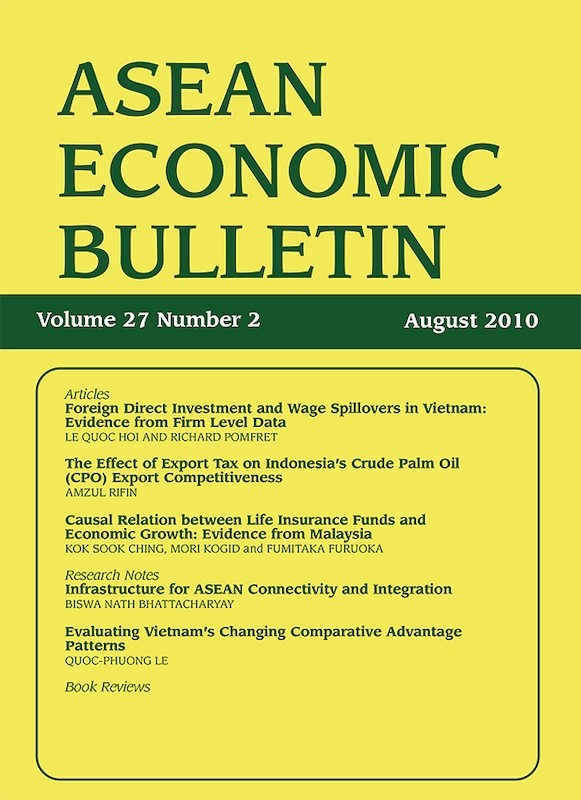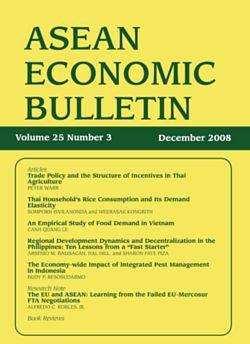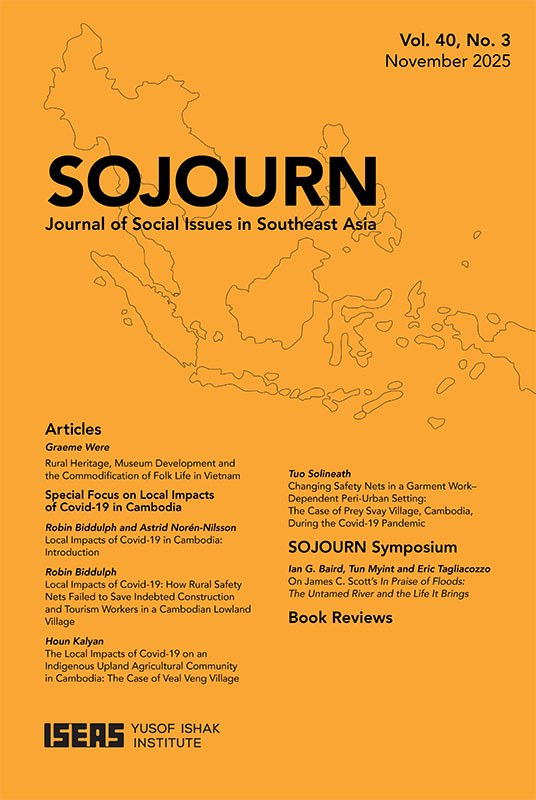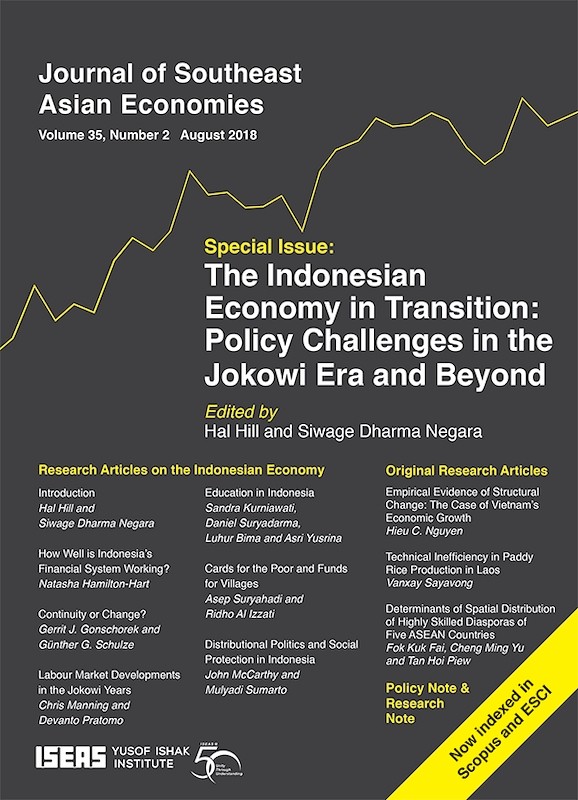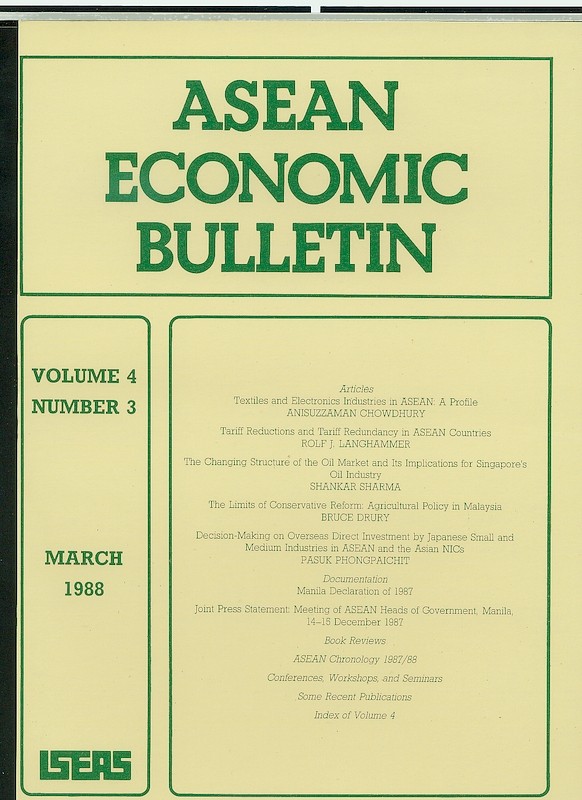Journal of Southeast Asian Economies Vol. 41/2 (August 2024).
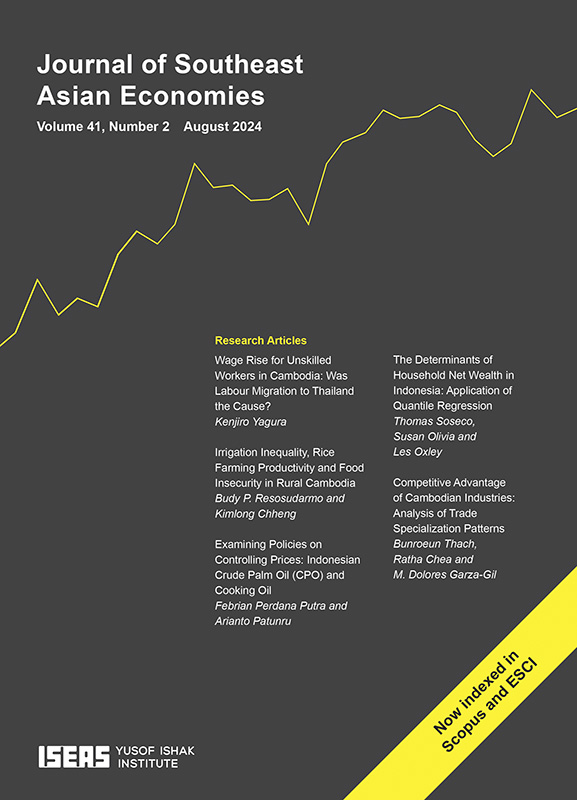
Date of publication:
August 2024
Publisher:
ISEAS – Yusof Ishak Institute
Number of pages:
106
Code:
AE41/2
Soft Cover
ISSN: 23395095
Contents
-
Journal of Southeast Asian Economies Vol. 41/2 (August 2024).
[Whole Publication, ISSN: 23395206] -
Preliminary pages
- ARTICLES
-
1. Wage Rise for Unskilled Workers in Cambodia: Was Labour Migration to Thailand the Cause?, by Kenjiro Yagura, author see abstractThe real wages of agricultural workers and unskilled workers in non-agricultural sectors in Cambodia remained at low levels during the 2000s, but experienced a rapid increase in the 2010s when labour migration from Cambodia to Thailand increased. Analysing wage data from 2000 to 2018 using the Vector Error Correction Model (VECM), this study found that, in the 2010s, the rise in Thailand’s minimum wage led to large wage increases among agricultural workers in Cambodia, further leading to an increase in wages for unskilled garment factory and construction workers. These findings suggest that Thailand’s wage increase led to an increase in labour migration from rural areas in Cambodia to Thailand, resulting in a decrease in labour supply in rural areas and a reduction in migration from rural areas to non-agricultural sectors in urban areas. These findings also suggest that labour migration to Thailand negatively affects the development of the garment industry by raising labour costs.
-
2. Irrigation Inequality, Rice Farming Productivity and Food Insecurity in Rural Cambodia, by Budy Resosudarmo, Kimlong Chheng, authors see abstractThis paper investigates the impact of inequality in access to irrigation on rice farming productivity and on food insecurity among rice farmers in rural Cambodia. Using household survey administered to farming households in thirty-two rural villages in four provinces, we show that better irrigation access, particularly reservoir, dike or canal irrigation, provides households with significantly higher rice production and revenue. We also show that the productivity of rice farming is significantly and negatively associated with household food insecurity. Hence, developing irrigation networks such as reservoirs, dikes or canals to reduce irrigation inequality is a key policy option to tackle food insecurity in Cambodia.
-
3. Examining Policies on Controlling Prices: Indonesian Crude Palm Oil (CPO) and Cooking Oil, by Febrian Perdana Putra, Arianto Patunru, authors see abstractIndonesia is the world’s largest producer and exporter of crude palm oil (CPO), accounting for nearly half of global supply in 2022. The CPO industry’s growth has been driven in part by rising prices. However, high CPO prices have also led to higher domestic prices, including for cooking oil. This has put pressure on the Indonesian government to regulate prices through policies, such as export restrictions. This paper examines the effectiveness of export-restricting policies and other domestic price shocks that the government could intervene in. Using Structural Vector Autoregression (SVAR) models, the paper finds that export-restricting policies are not effective in reducing domestic CPO and cooking oil prices. This is due to the strong price linkages between international CPO prices and domestic CPO prices. Additionally, the observed domestic household- and firm-level shocks are also insignificant in affecting prices, limiting the scope for government intervention. Finally, the paper suggests that the government should be cautious about interfering with market prices and should instead focus on improving access to affordable food products.
-
4. The Determinants of Household Net Wealth in Indonesia: Application of Quantile Regression, by Thomas Soseco, Susan Olivia, Les Oxley, authors see abstractEstimation of the determinants of household net wealth that consider heterogeneity across income classes using only average values can lead to faulty interpretations. This paper controls for such variation in classes in relation to efforts to increase household wealth by applying quantile regression using Indonesian household data. For this purpose, the study uses the Indonesian Family Life Survey, using five waves of the survey from 1993 to 2014. Empirical findings show that heterogeneity in household characteristics across classes can influence wealth, with major differences between urban and rural households. Some significant contributors include household size, years of schooling of household head, intergenerational money transfers and agriculture as the main employment sector. Some variables that display an increasing pattern with higher returns for higher classes are years of schooling of household heads and intergenerational money transfers. Meanwhile, the variable with a decreasing pattern is agriculture as the main employment sector.
-
5. Competitive Advantage of Cambodian Industries: Analysis of Trade Specialization Patterns, by Bunroeun Thach, Ratha Chea, M. Dolores Garza-Gil, authors see abstractThis article aims to understand Cambodia’s long-term trade specialization patterns at the country and industry levels. To achieve this, trade specialization indices are constructed for a sample of 253 industries. The findings show that Cambodia has an incipient national innovation system to support the organizational and technological capabilities of domestic firms. It has four growing high-tech, sixteen emerging high-tech, and eleven marginal high-tech industries. The country is also home to eleven growing low-tech, twelve emerging low-tech, and seventy-one marginal industries. Cambodian industries reveal stickiness and incremental change, which means that the initial trade specialization values move slowly towards the average within sectors. There was a decrease in the dispersion of trade specialization, which is indicative of slow mobility across sectors towards the broad pattern of specialization. This finding suggests that Cambodia lacks Schumpeterian entrepreneurs, who have the organizational and technological capabilities to learn and adapt new knowledge and technologies into the local context before diffusing them into the broader economy to build national competitiveness.

